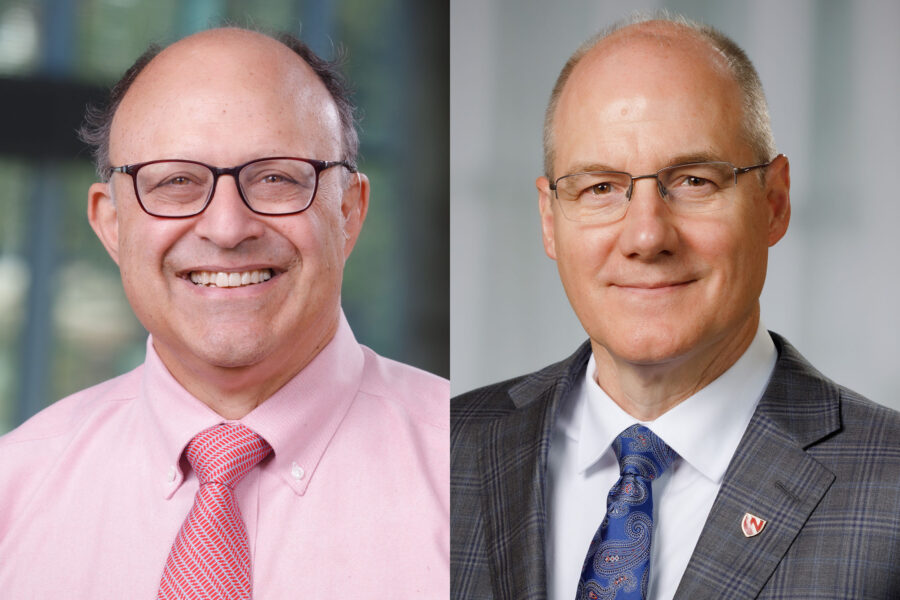In a research town hall held on Thursday, June 12, campus leaders provided an update about federal changes that would cut the university’s indirect cost recovery rate from 53.5% to 15%. If implemented, they said, the proposed federal cap would cost UNMC tens of millions of dollars in funding annually to support the research infrastructure.
Howard Fox, MD, PhD, senior associate dean of research and development in the UNMC College of Medicine, is serving on a national task force aimed at developing alternative funding models to present to Congress.
“Congress and the White House have said the current model is no longer viable,” Dr. Fox said. “Without action, we risk losing our national leadership in science and technology.”
The Joint Associations Group is a coalition of 10 major science advocacy groups, including the Association of American Medical Colleges, Association of Public and Land-grant Universities and the American Association of Universities. Together, they nominated 26 experts, including Dr. Fox, to craft two new models of indirect cost recovery.
The effort, branded the FAIR (Fiscal Accountability in Research) Initiative, produced two models designed to enhance transparency, align with real project costs and eliminate the facilities and administrative, or F&A, rate currently used, Dr. Fox said.
“Our goal is to obtain further feedback and potentially create a single model that unifies institutions and demonstrates to Congress that we are accountable and serious,” he said.
Dr. Fox considers “Model One,” with two components – Principal Investigator (PI)-Managed Project Costs (formerly known as direct costs) and Institution-Managed Essential Research Support (ERS, formerly known as indirect costs) – easier to implement. “Model Two” has three components: PI-Managed Project Costs, Institution Managed Project Costs and Institution-Managed Essential Research Support (ERS). However, both are still under review, he said, and a goal is to present a single unified model to Congress, avoiding confusion or rejection.
Dr. Fox said under both FAIR models, the emphasis would shift from pure percentage-based reimbursements to itemized and auditable categories of essential research services. “This means institutions must clearly demonstrate how every federal dollar supports research-specific needs.”
UNMC Vice Chancellor for Research Ken Bayles, PhD, told attendees there will be difficult adjustments ahead, with some changes already underway, including phasing out underused core facilities. The comparative medicine facility will see a 10% per diem rate increase starting in July, as well, he said.
Dr. Fox said the new FAIR models aim to eliminate negotiation of indirect rates, streamline federal audits and align expectations across agencies including the National Institutes of Health, the National Science Foundation and the Department of Defense.
“Both models allow for project-specific modifiers and institutional-type adjustments, allowing for tailored reimbursements based on actual research needs,” Dr. Fox said.
The government’s primary concern is that taxpayer dollars are being spent responsibly and directly for support of research, not diverted into general funds, he said. “We have to be transparent, clearly and consistently demonstrating how those funds are spent.”
As the models move toward national rollout as early as this summer, Dr. Bayles called on the research community to adapt. “We all need to get smarter about budgeting,” Dr. Bayles said. “We will be providing tools, guidance and support to do that.”
Dr. Fox said although many uncertainties remain, including congressional acceptance of any new model, UNMC’s proactive response positions it among national leaders in defining a more transparent, equitable system of research funding.
Watch a recording of the town hall and view more information about the two models here.
